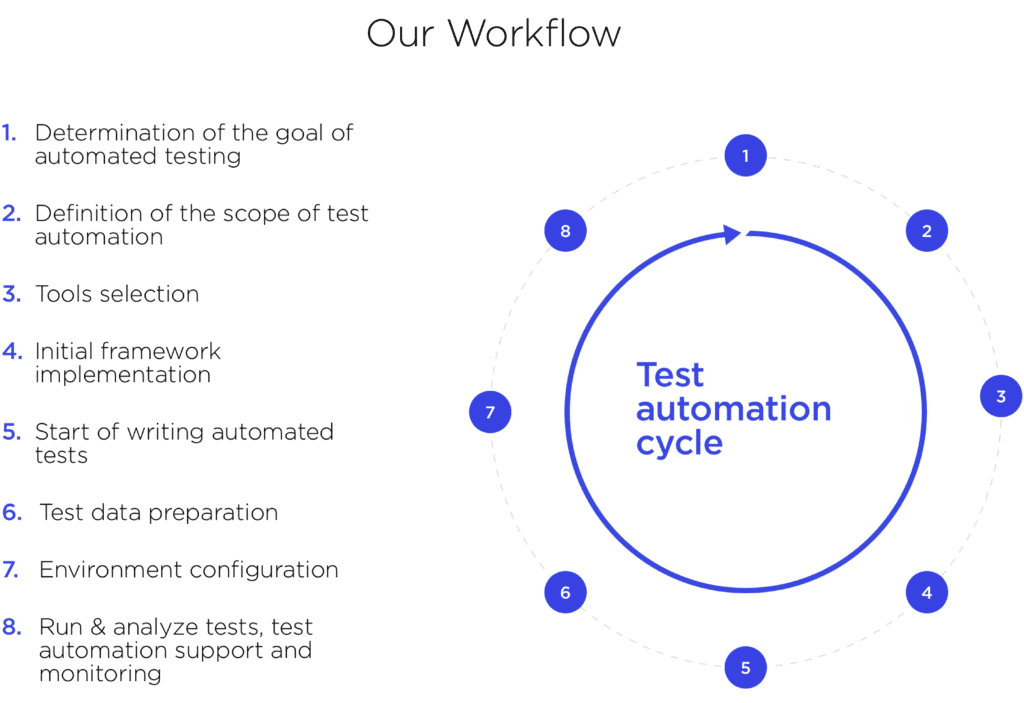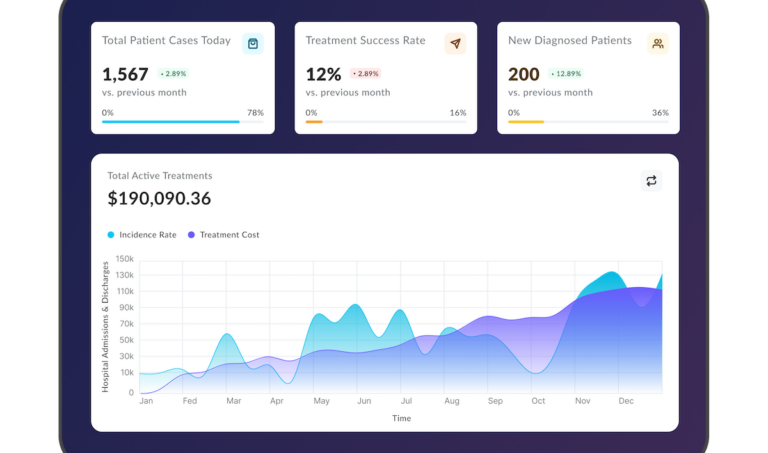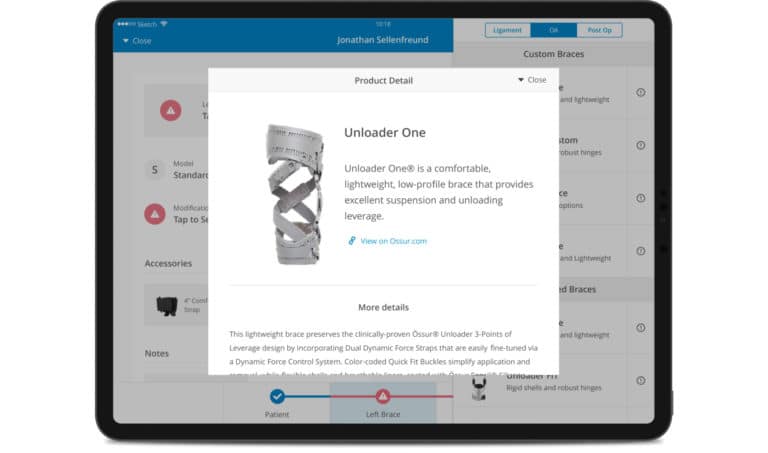The Roadmap to Scaling Software Development Teams: Challenges and Solutions
Updated: June 4, 2025
As your tech business grows, naturally, so does the need to scale your software development team. With your product winning over users and development ramping up, managing the escalating workload becomes key. But what’s the smartest way to do it?
Simply hiring more folks might seem like the easy answer. Yet, companies often stumble into a thicket of challenges when scaling their software teams. That’s where we step in at Relevant. We’re experts in software development outsourcing, and we know how to dodge these common pitfalls. Keen to learn how? It’s all in this article. By the end, you’ll be armed with the best practices for scaling software teams. So, let’s dive right in.

We provide companies with senior tech talent and product development expertise to build world-class software. Let's talk about how we can help you.
Contact usTable of Contents
Reasons to Scale Your Software Development Team
The decision to scale a team is not taken lightly, and the factors driving it are typically multifaceted and deeply intertwined with your business strategy. Let’s explore some primary reasons an organization might choose to scale its development team.

- Increasing Capacity: One of the most immediate triggers for scaling software teams is the need to increase capacity. As your organization grows, the demand for your services expands. It is often necessary to augment the team size based on the scale of development software to keep up with this increased workload without sacrificing efficiency or quality.
- Diversification of Skills: As your business explores new domains or wishes to innovate within existing ones, you may need to bring in professionals with different skills or expertise. Scaling your Agile team allows you to diversify the skill set within your workforce, facilitating new product development or expansion into new markets.
- Boosting Delivery Efficiency: In today’s fast-paced digital world, speed holds a crucial edge. To stay ahead of the competition, it might be necessary to scale agile development team, enabling you to minimize time-to-market for your products or features.
- Ensuring Redundancy: In business, relying on a single point of failure is a risk. What happens if your operations depend on a small team or a few key individuals if they’re suddenly unavailable? Scaling teams ensure there’s always a backup available, mitigating risks and ensuring continuity of operations.
- Responding to Market Dynamics: Market trends, customer expectations, and competitive landscape can shift dramatically and rapidly. Scaling allows your organization to react quickly to these changes, be it a sudden surge in demand, the advent of new technologies, or shifting customer preferences.
- Boosting Innovation: More minds often mean more ideas. Scaling agile development teams brings fresh perspectives and potentially stimulates innovative thinking, increasing your organization’s ability to create groundbreaking products or services.
- Improving Quality Assurance: With project complexity, quality assurance becomes paramount. Scaling your team allows you to dedicate more resources to testing, ensuring your product meets the highest quality standards.
- Facilitating Specialization: As your organization grows, you may want to promote specialization, allowing team members to focus on specific areas of the software development process. This can improve the overall quality of your work and foster deeper expertise in critical domains.
In the context of software development, there are a few more points to ponder.
| Reasons for Scaling Software Team | Explanation |
| Delayed Feature Implementation | If new features are consistently taking too long to implement, it may be a sign that your team is overworked and understaffed. |
| Deployment Issues | If every deployment is chaotic and stressful, especially without Continuous Integration/Continuous Deployment (CI/CD), it may be time to scale your team to better manage these processes. |
| Increasing Regression Testing Burden | If regression testing is becoming increasingly time-consuming and costly, you may need to expand your team with professionals specializing in this area. |
| Security Lapses | Any inability to maintain strong security protocols and protect data indicates a need for more team members specializing in cybersecurity. |
| Poor Database Structure | A poorly organized database can result in problems with performance and scalability. If these problems persist, expanding the team with a database specialist can be a solution. |
Top Challenges and Solutions of Software Development Team Scaling
Solutions for scaling a software development team can be a double-edged sword, fraught with challenges even as it promises growth potential. Missteps can trigger issues, from communication breakdowns to productivity declines, threatening your expansion. Yet, with a keen understanding of these hurdles and the appropriate solutions at hand, you can successfully navigate the scaling process.
Distributed Teams Management
Challenge: In an era of remote work and global collaboration, it is increasingly common for software development projects to feature at least a few remote team members. However, when you scale up to the point where entire teams are distributed across multiple locations, countries, and time zones, you might find your meticulously crafted communication strategy starting to unravel.
Let’s consider the complexity: your headquarters and development center could be separated by an 8-hour difference; each office might have its unique organizational tools and programs; contractors could operate on flexible schedules and reporting tasks in a specific system. These factors, among others, can turn software scaling into a real communication mess.
Moreover, suppose you are building a software development team from people in different locations. In that case, changes are inevitable, necessitating a shift from face-to-face meetings to video conferences and substituting physical office tools like whiteboards with their digital counterparts. Acknowledging that your core team may initially resist these changes is critical. Adaptation to new processes does not happen instantly; it requires time and patience.
Solution: To surmount this challenge, you must thoroughly revamp your communication channels and devise a strategy that effectively covers your distributed teams while remaining practical for your in-house personnel. This might involve modifying working hours for certain employees or setting up alerts to respond promptly to emergencies occurring in a different timezone.
Expert Tip. Your strategy should promote a flexible and inclusive communication environment, leveraging tools that foster collaboration and facilitate effective information sharing. It may also be helpful to establish a standard set of tools and practices across teams to reduce confusion and increase efficiency. Remember, the goal is not just to communicate but to do so in a way that minimizes disruptions and maximizes productivity.
By the way, if you want to expertly avoid software outsourcing failures, read these tips.

Project Management
Challenge: As an offshore software development team expands, the number of tasks escalates correspondingly, making project management a formidable challenge. Large-scale projects demanding dedicated teams or complex tasks needing subdivision into smaller, manageable parts necessitate a meticulous approach to project management grounded in strategic planning and sound principles.
Solution: During this scaling phase, it is critical not to structure teams solely around technology. Instead, concentrate on product-focused or functionality-specific teams, like mobile apps or backend teams. Such an arrangement promotes specialization, thereby enhancing development speed and quality. Employing a dedicated team model is often the most effective strategy for individual, extensive projects. These teams are accountable, balanced, and adaptable in the face of shifting requirements.
Expert Tip. Regarding task management, consider shortening sprints to foster a quicker response time and cultivate an atmosphere of ongoing progress. In this situation, brevity tends to yield better results. Maintaining a full backlog and assigning accountability for each task is crucial. To facilitate this, select user-friendly, efficient reporting tools like Jira, our tool of choice at Relevant for project management.
Architectural Planning
Challenge: Sometimes there is a mismatch between the product architecture and the scalability requirements of the software development team. This phenomenon finds an explanation in Conway’s Law, which underscores the relationship between an organization’s structure and the ensuing product architecture. While Agile SDLC methodologies typically de-emphasize upfront design, intricate projects demand a degree of preliminary planning.
Solution: To circumvent potential scaling issues, it’s critical to plan an architecture that supports future growth right from the onset. This task necessitates the expertise of a software architect. We can facilitate this process at Relevant by providing access to a software architect under our management.
Expert Tip: While it’s crucial to create an architecture that can handle future scale, it shouldn’t come at the cost of agility and efficiency in the present. Also, ensure that the architecture is flexible enough to accommodate changes as the business evolves so that the team can adapt to changing requirements without substantial disruptions. Therefore, involving a software architect early in the process can pay significant dividends as your team and project grow.
Roadmap
Challenge: A vital component of planning software architecture is clearly understanding your company’s direction. This involves grasping your objectives, the timeline, and the resources you are willing to commit.
Solution: Devise a comprehensive five-year roadmap for your business, outlining your plans, goals, and key milestones. This roadmap needn’t be overly detailed but should sufficiently convey the company’s strategic direction, enabling your team to respond effectively to any alterations.
Expert Tip: When constructing your business roadmap, remember it is a guiding tool, not a rigid framework. Be flexible and open to alterations as circumstances change. Always ensure that it aligns with your overall strategic vision, provides clear direction, and allows room for adaptation and innovation. This balance is crucial for successful navigation through your growth journey.
Keeping Up Productivity and Quality
Challenge: Maintaining productivity and quality during software team scaling can be more complex than it first appears. It would seem a larger team should yield faster, better output due to an increased workforce. However, this perception is misleading. Applying Amdahl’s Law to a scaling development team reveals that certain tasks must follow a specific sequence, constraining the number of people who can work on them concurrently.
Hence, a larger team does not guarantee that new features will be coded faster or more effectively. In fact, the need for communication and synchronization among teams may even precipitate a decline in productivity. This can generate feedback loops and overlooked bugs that take time to resolve and lead other groups to create workarounds, prolonging the problem.
Solution: Choosing appropriate programming languages and tools can augment productivity and streamline team communication. Techniques such as static coding or employing unit tests with a dynamic language may prove beneficial. Additionally, defining clear operational boundaries for each team, with less interdependent tasks, is crucial. Analyze the project architecture, programming language, tools, and team skill set to identify potential bottlenecks compromising productivity or quality. Consider splitting the product’s internal system and the team to manage complexities better. Also, utilize effective communication channels to ensure changes are transparent to all team members.
Expert Tip: Amidst scaling, keep an eye on ‘work in progress’ (WIP) limits. The more tasks a team undertakes simultaneously, the harder it becomes to manage them effectively, leading to potential productivity and quality issues. By enforcing sensible WIP limits, teams can focus on completing tasks before embarking on new ones, thus improving efficiency and maintaining quality.
CI/CD and Scalability
Challenge: Smaller organizations often adopt open-source tools to establish their Continuous Integration (CI) and Continuous Delivery (CD) pipelines. This initial proof-of-concept, however, may not afford to scale a team effectively as the organization grows. With each new team comes the need for additional CI pipelines, leading to communication challenges and the need for swift environment provisioning.
Solution: Proper implementation of DevOps practices can help mitigate these scaling issues. The first step is to adopt an “infrastructure as code” approach, enabling you to add new infrastructure for each project as needed seamlessly. Isolating individual software components from the larger IT infrastructure using containers can also enhance the management of application segments, regardless of scale. Furthermore, it’s critical to integrate infrastructure automation tools with CI/CD tools and implement robust test automation.
Expert Tip: As your development team scales, it’s vital to maintain a unified CI/CD pipeline where possible. This promotes better consistency and control across teams and projects. Additionally, leveraging cloud-based CI/CD tools can provide scalable, flexible resources that can grow with your team and needs.
Manual Activities
Challenge: Manual activities invariably become bottlenecks in a scaling software development team. As your team expands, certain manual tasks either grow exponentially in complexity or sheer volume. Testing is often the first victim. Automation, while a fundamental part of DevOps and CI/CD, becomes particularly crucial during the scaling process.
Solution: Strive to automate as many business processes as possible, beginning with testing. Prioritize regression, smoke, and sanity tests for automation. Follow this with data-driven tests, stress and load tests, and the automation of time-consuming and business-critical paths that directly impact user experience.
Expert Tip: Remember that automation is not solely about testing; it should permeate your development processes. Look for opportunities to automate repetitive tasks such as code reviews, deployments, and even some design aspects. By adopting automation throughout your development cycle, you can effectively manage the complexities of scaling, ensuring consistent output quality and productivity.

Prepare Your Code for Scaling
Challenge: Shared codebases can prove daunting for new developers joining your team. Without strategic foresight, understanding another developer’s code can take weeks, undermining productivity and countering the essence of team scaling.
Solution: A key to smoother scaling teams lies in maintaining simplicity and clarity in your code. Uphold the coding style agreed upon by your team, ensure consistency in your code, and keep logic clear for easy comprehension by any new developer. Break down complex calculations into smaller, specific functions. Use one term consistently across different classes for the same concept. Opt for descriptive names over cryptic abbreviations. Implementing CI/CD will aid in automating some processes and ensuring optimal service quality.
Expert Tip: Invest in a robust code review process. Regular, thorough code reviews promote better quality code and provide an excellent knowledge-sharing platform. New developers can quickly learn the codebase and coding style through this process. Additionally, leveraging documentation tools can further streamline the onboarding process for new developers.
Ultimately, the best practices for scaling software teams depend on a blend of strategic planning, efficient processes, and continuous learning. With these in place, you can achieve scalable growth that aligns with your business objectives and project requirements and overcome challenges in scaling software teams.
Scale your Software Development Team with Relevant Software
Scaling software development teams is an impactful move that can signify a promising stage in your business’s evolution. Initiating this scaling journey, you don’t have to go it alone. Choosing Relevant Software as your outstaffing partner offers pragmatic advantages like:
1. Expertise: Our broad technical pool fills your team’s skill gaps without the need for extra training or recruitment.
2. Scalability: Scaling your development team effectively based on project needs, we can bypass risks of in-house staff adjustments.
3. Efficiency: With minimal ramp-up time, we accelerate project delivery, reducing time-to-market.
4. Focus: While Relevant is developing your software, you can fully focus on your core business competencies.
5. Industry Insight: Our understanding of market trends positively impacts your software development decisions.
In essence, Relevant Software isn’t just a vendor but a strategic partner offering a practical, robust, cost-effective path to meet your software development objectives. Contact us, and let’s set the ball rolling on your next software project together.
FAQ
Our core services:
Do you want a price estimate for your project?
Do you know that we helped 200+ companies build web/mobile apps and scale dev teams?
Let's talk about your engineering needs.
Write to us











